If you’ve found Banff’s Johnston Canyon far too crowded, or Jasper’s Maligne Canyon too far away, Grotto Canyon is a third option worth considering. This underrated gem of Kananaskis Country doesn’t offer as many stunning waterfalls as Johnston nor is it as deep as Maligne, but it offers a unique and quiet canyon experience that’s entirely its own. Located barely ten minutes east of Canmore, Grotto Canyon is located in an area dense with four popular canyon walks – the others being Heart Canyon, McGillivray Canyon, and Jura Canyon. Grotto Canyon is the most popular of the four, and probably the best combination of accessibility and beauty of the four of them.
The first part of the trail leading to the canyon is bland and uninteresting, as it parallels the highway and passes closely by the Baymag processing plant, until finally reaching the Grotto creekbed and opening up to a gorgeous viewpoint of the Bow Valley beyond. This one of my favourite Bow Valley viewpoints that doesn’t require any real elevation gain. Once the trail enters the canyon though, and the rock walls rise up on either side, is where the walk becomes really interesting. Unlike some other canyon walls, there are no obstacles or boulders that really need to be climbed over, and the most challenging section is probably the short steep descent along the trail into the creekbed.
The walk into Grotto Canyon definitely rewards those who do their research and know where to look, as the walls of the canyon are home to some fascinating and ancient pictographs. Further up is the small (though difficult to approach – best enjoyed from a distance) waterfall that is all that remains of the night glacial meltwater that once carved the whole canyon. In the winter two other small drips turn into large ice pillars that are very photogenic. If continuing even further through the canyon, you’ll be taken to view of a large cave opening in the unusual-looking cliffs above. It’s possible for the brave to scramble up to the cave, but it is quite steep.
Continue reading this blog post for everything you need to know to experience the Grotto Canyon hike in Kananaskis Country for yourself, including distance, elevation gain, how to get there, the best time to visit, and lots of photos of my experience.
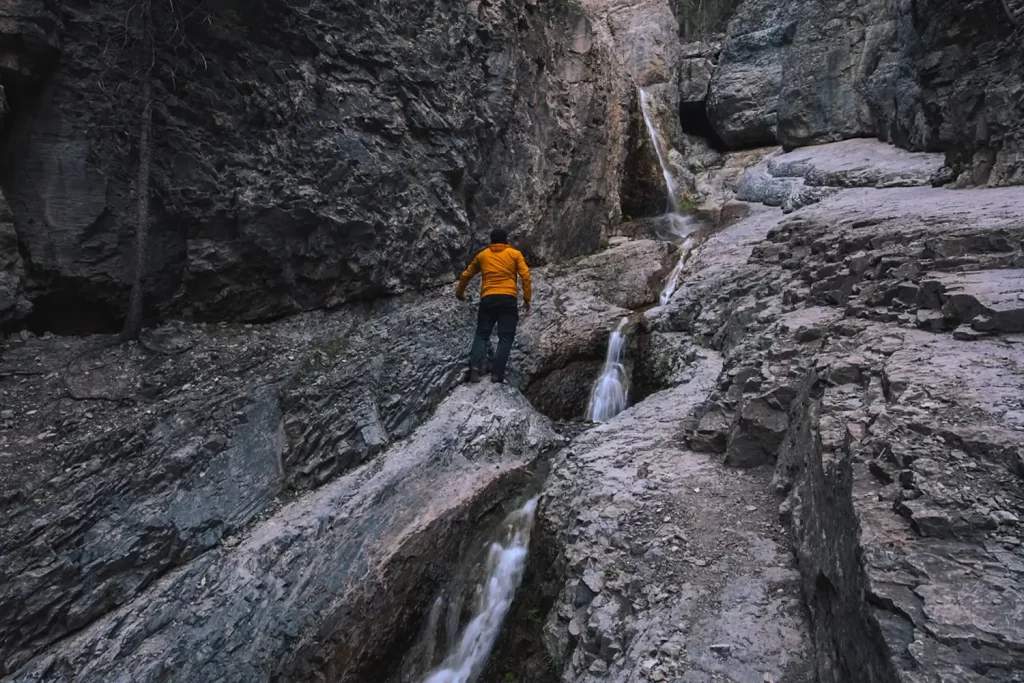
Note: The Grotto Canyon hike is located in Kananaskis Country, meaning that a valid park pass is required. Day passes can only be purchased online and are per day per vehicle, but if you’re staying six days or longer, it’s more cost-effective to just buy an annual pass instead.
Before visiting Kananaskis Country it’s essential to read up on the Alberta Parks rules that must be followed to avoid tickets and/or fines. Harmful practices that are illegal in Kananaskis Country include disturbing plants or rock-stacking, or removing any natural object from flowers to rocks, as it’s important to leave the environment as natural as possible for the animals and for fellow hikers to enjoy in perpetuity. As many flowers as there are, there are few enough that if we all took one, then there wouldn’t be any left. Take only photos, leave only footprints.
If you haven’t heard of Leave No Trace principles, they’re also really essential to read up on before heading anywhere into the outdoors in general. Following these important principles basically means doing your best to leave beautiful places like Grotto Canyon as good (if not better) than you found them, both for their preservation and for the enjoyment of other visitors.
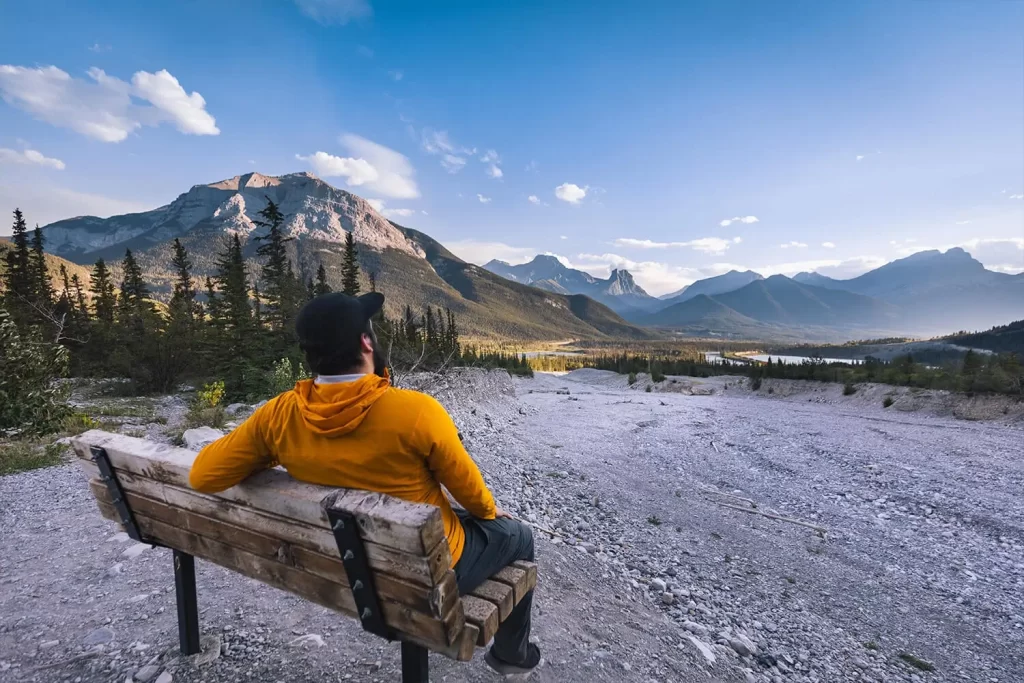
Grotto Canyon Round Trip Details
Distance: 6.5 KM / 4 MI
Elevation Gain: 325 M / 1066 FT
Hiking Time: 3 HRS
Hiking & Safety Tips
- Prepare for the possibility of wildlife encounters. Bear spray is a must whenever travelling in bear country, as well as learning how to use it. Though your chance of an aggressive bear encounter is low, it is always better to be prepared with bear spray. Bear bells are proven to be an ineffective bear deterrent, and are actively discouraged by Parks Canada. The best way to let bears know you’re around is simply to use your voice. Make sure to keep a respectful distance from wildlife and never feed the animals. It may seem kind but it doesn’t just kill wildlife and put people in danger, it’s also illegal.
- Research current trail conditions and make sure you are well-informed about the route before you leave, and assess if it is within your capability. Be aware of what time it gets dark and check the weather forecast. Make sure to tell someone where you’re going and when you expect to return. Every year as more and more people try hiking for the first time, the number of rescues goes up. Being prepared is the best defense.
- Pack everything you need for a successful hike, including enough water and energy-rich snacks. Remember to pack out everything you pack in though – don’t expect to find a convenient garbage can halfway up the trail. Bring appropriate layers (remember you’ll warm up once you start hiking) and sun protection. Hiking poles may be helpful but are not required. In addition to not leaving any garbage on the trail yourself, I highly recommend bringing a garbage bag and collecting any trash that you do see on the trail. You’re guaranteed to make the hike through Grotto Canyon a more enjoyable experience for the next person.
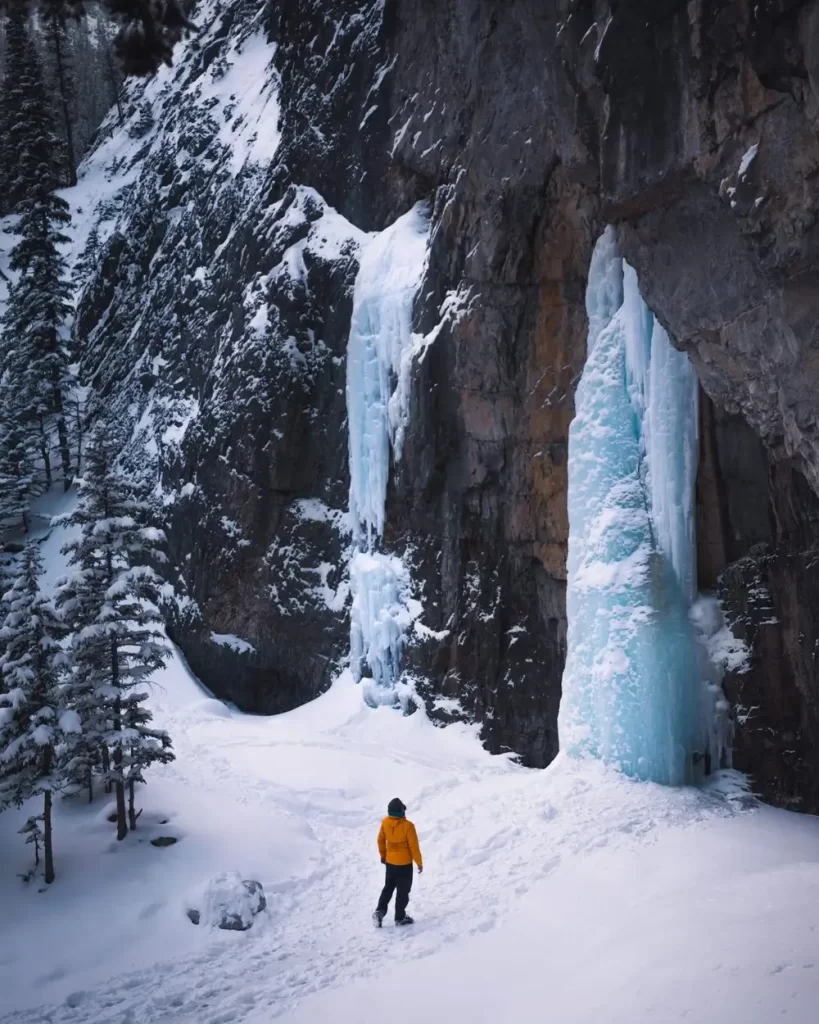
Hiking Grotto Canyon in Winter
While Grotto Canyon might be a bit of a hidden gem in the summer, it’s in the summer that it actually attracts a crowd (although still nothing like Johnston Canyon). Solo hikers and guided tours come to see the ice pillars and to walk across the frozen stream. Hiking Grotto Canyon is a bit more challenging in the winter, but not by much. If you’re planning on visiting in the winter, I recommend checking out my full post full of pictures of Grotto Canyon in winter.
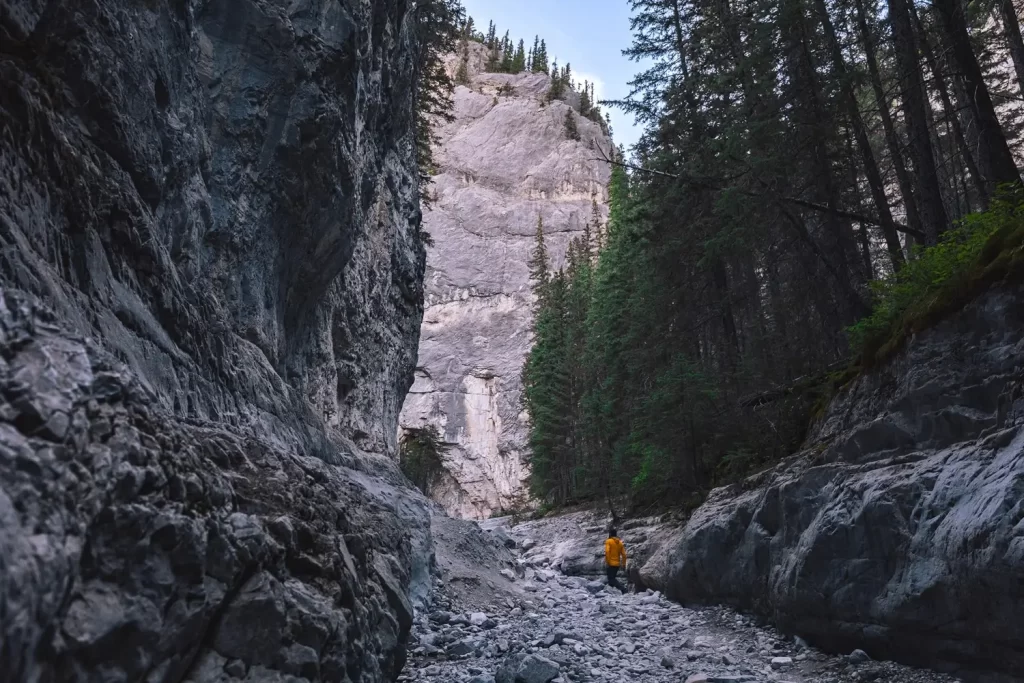
How to Get to Grotto Canyon Trailhead
The Grotto canyon parking lot is located fifteen minutes east of Canmore, forty minutes from Banff, or an hour west of Calgary, on the Bow Valley Trail or Highway A1, which runs parallel to the Trans-Canada Highway. (And I’m my opinion, offers much nicer views.) Access points for Highway 1A from the Trans-Canada are located to the east or west of Grotto Canyon. If driving on Highway 1 from Banff or Canmore, take Exit 91 just south of Canmore. At the immediate t-junction, turn left to drive east on 1A for a further 11 kilometres. If driving from the east, take Exit 114 just before entering the mountains. This intersection is the one just after the Stoney Nakoda Casino intersection. Drive down the road for about four kilometres to a t-junction, and then turn left onto 1A. Drive west for a further 11 kilometres.
Click here to open the exact trailhead location in Google Maps.
Hiking Grotto Canyon

The Grotto Canyon parking lot. That’s Mt. McGillivray in the distance.
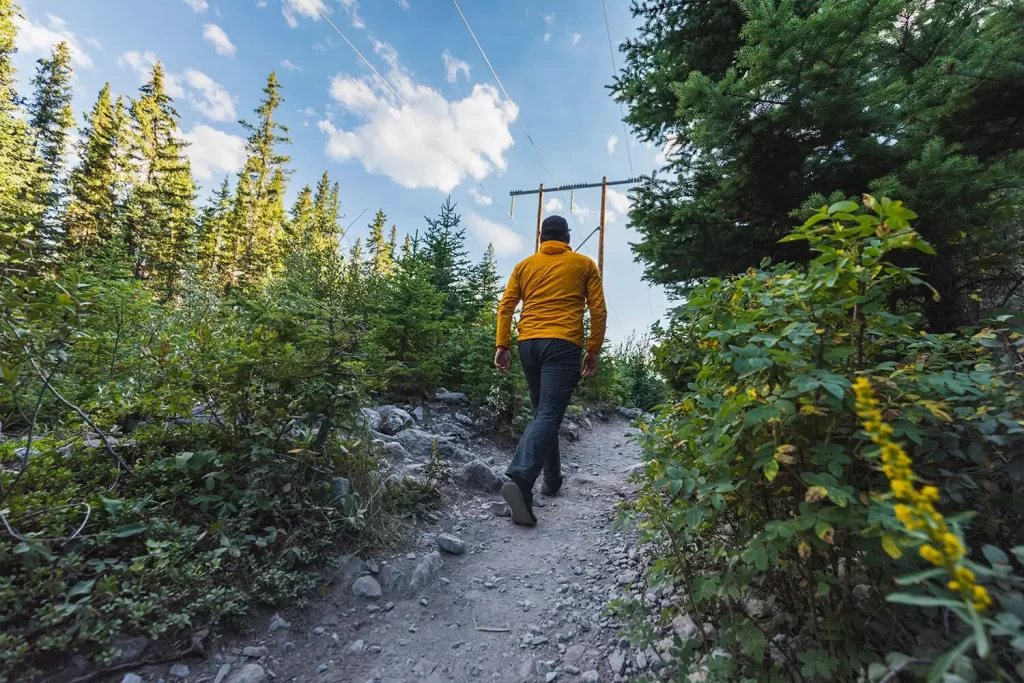
The trail follows under power lines for the first while, making it difficult to get lost in nature, both literally and otherwise.
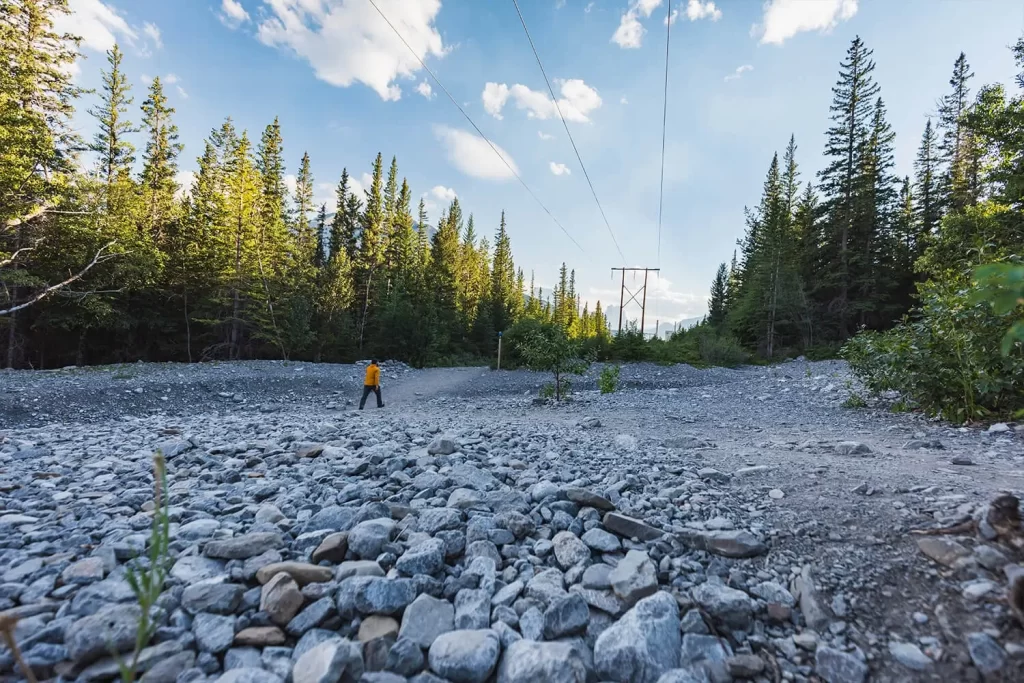
The Baymag magnesium oxide processing facility comes into view in the distance. Magnesite mined near Radium Hot Springs is processed in this facility, which can be heard all throughout the valley.
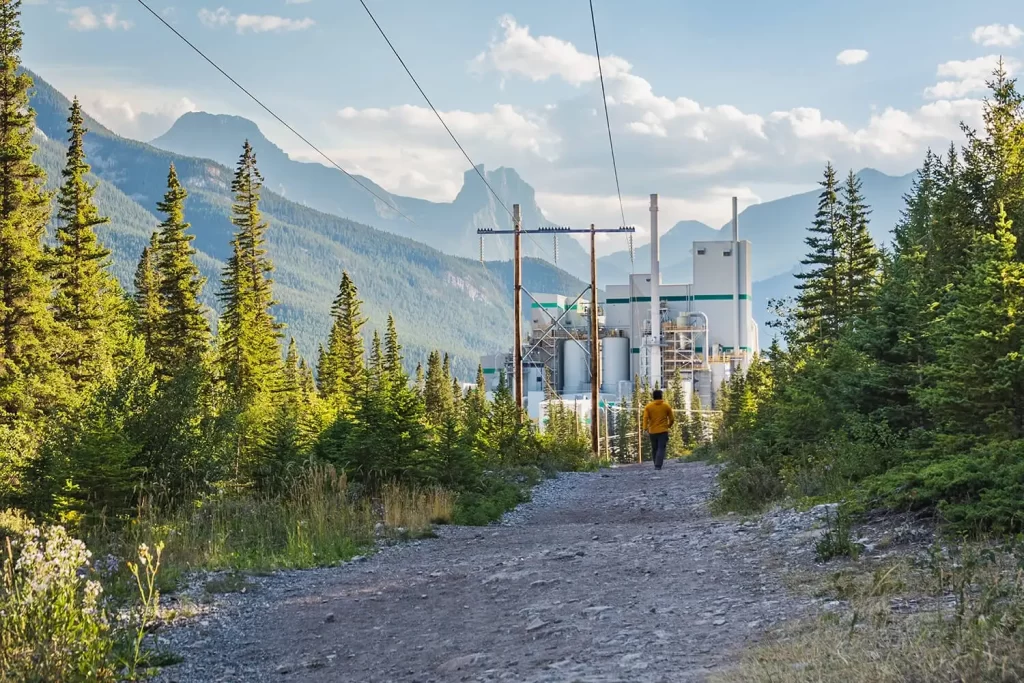
As the trail gets closer and closer to the facility one wonders if it’s the right way. Fortunately the power lines and trail turn away just at the last second, eventually leaving it behind.
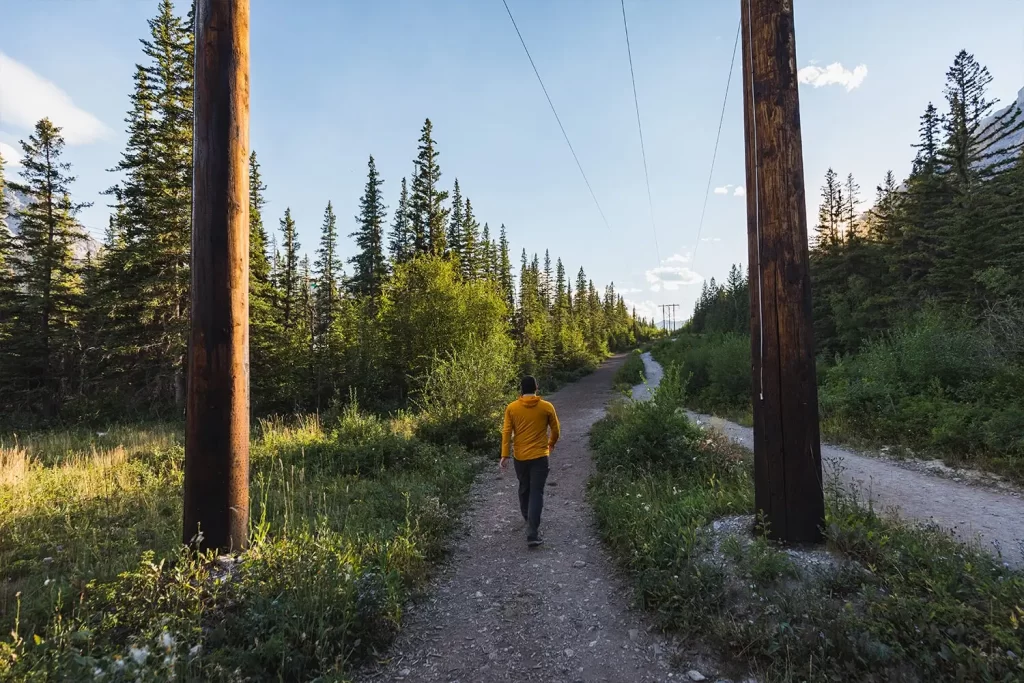
It takes a long time to stop hearing the Baymag Facility behind you though. A long time.
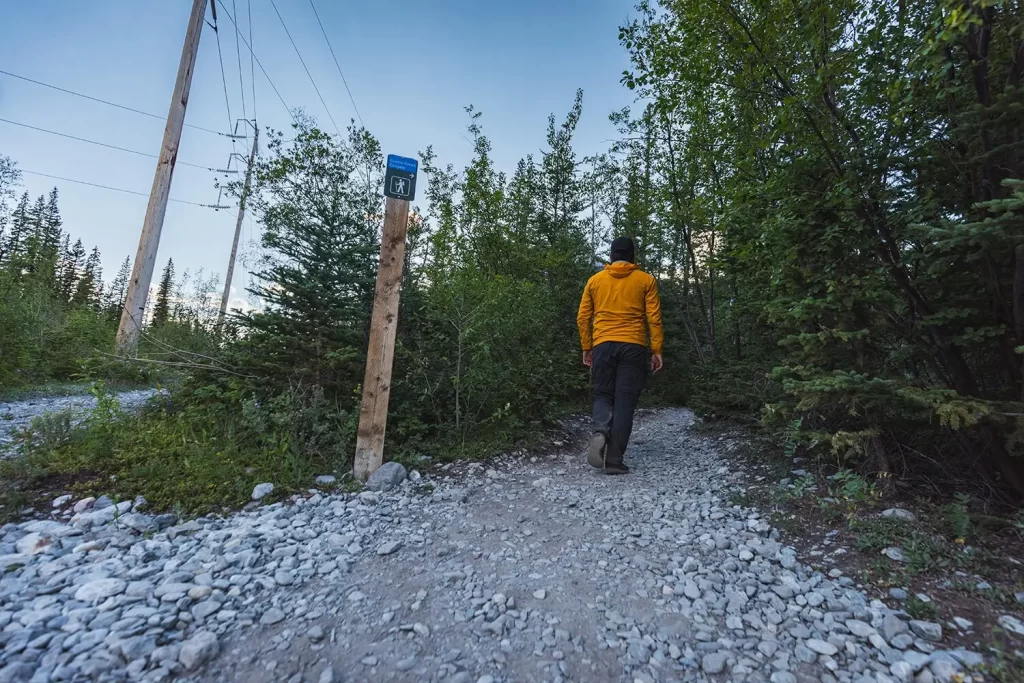
Eventually a smaller trail signed ‘Grotto Creek Canyon’ breaks off from the power lines and leads through the trees for a short while.

A lovely Bow Valley viewpoint where the trail meets the Grotto Creek bed. Can you spot the train in the distance?
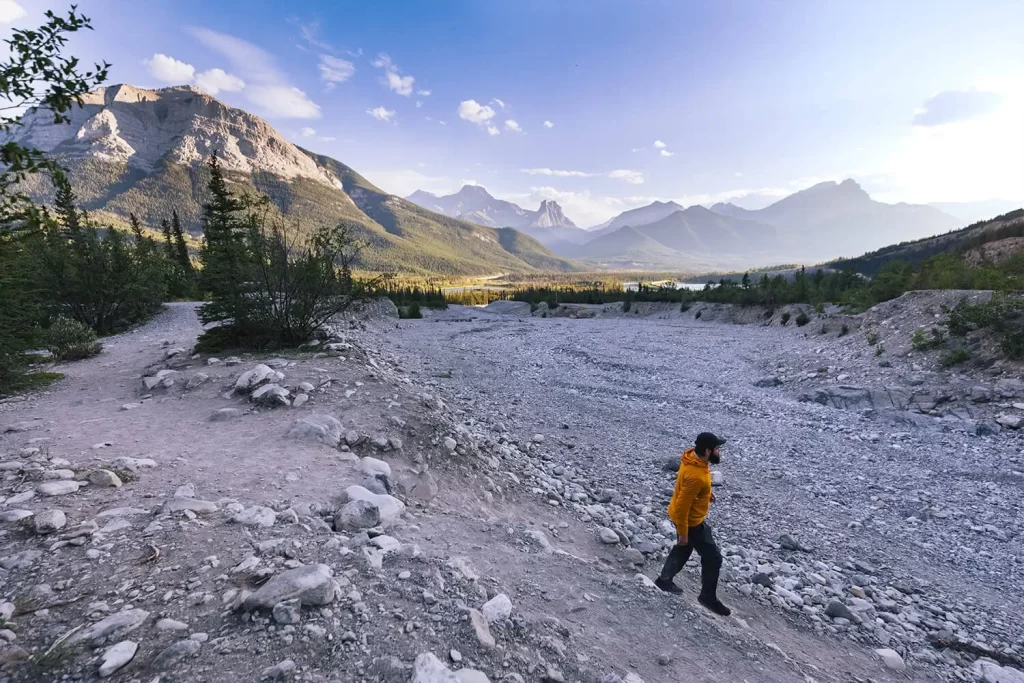
The trail then proceeds down into the creekbed. From here instructions are simple – follow the creek up.
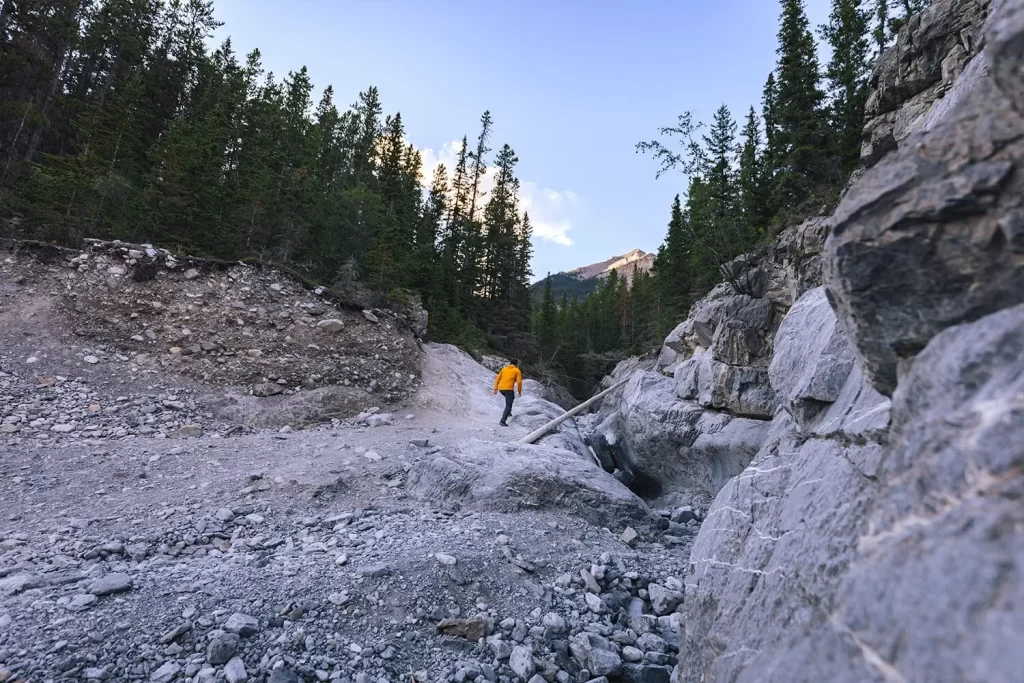
The entrance to the Grotto Canyon requires hopping up and down some rocks. At first the canyon is shallow and not much to look at.
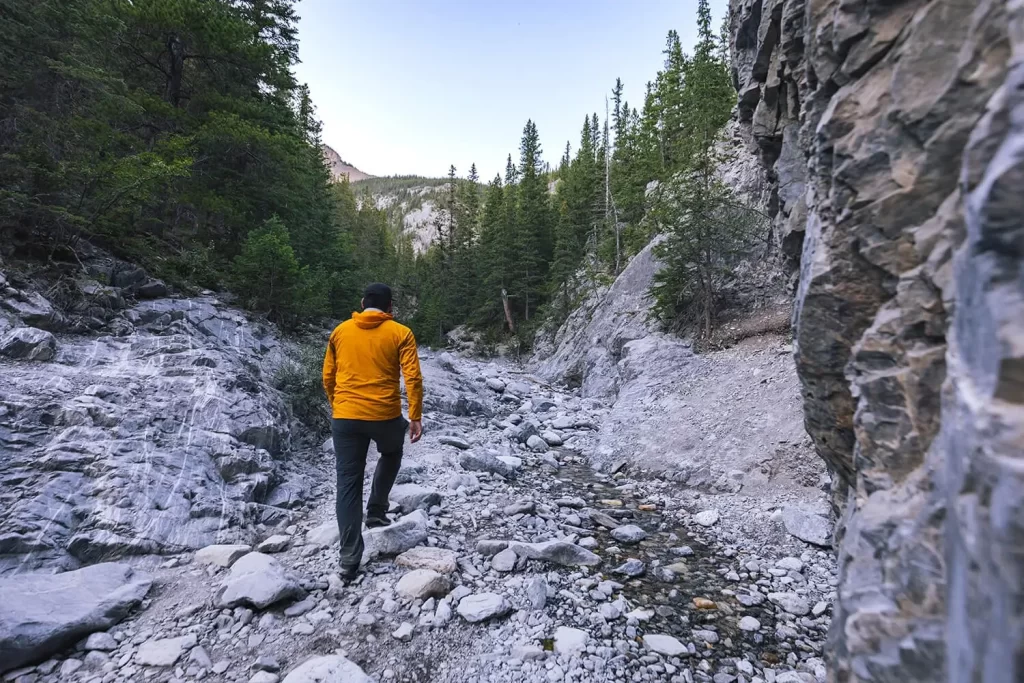
A shallow stream is all that’s left of the glacial runoff that carved Grotto Canyon 10,000 years ago. In the winter the entire base of the canyon is covered in slippery ice from the frozen stream, making ice spikes a necessity.
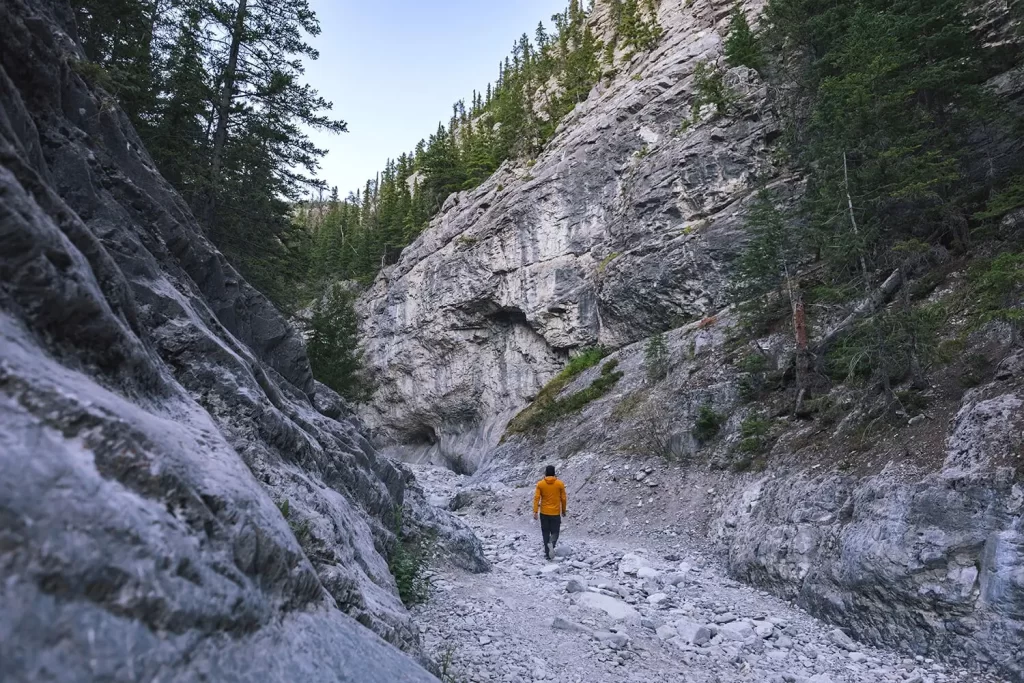
Suddenly the canyon walls start to rise higher and higher.
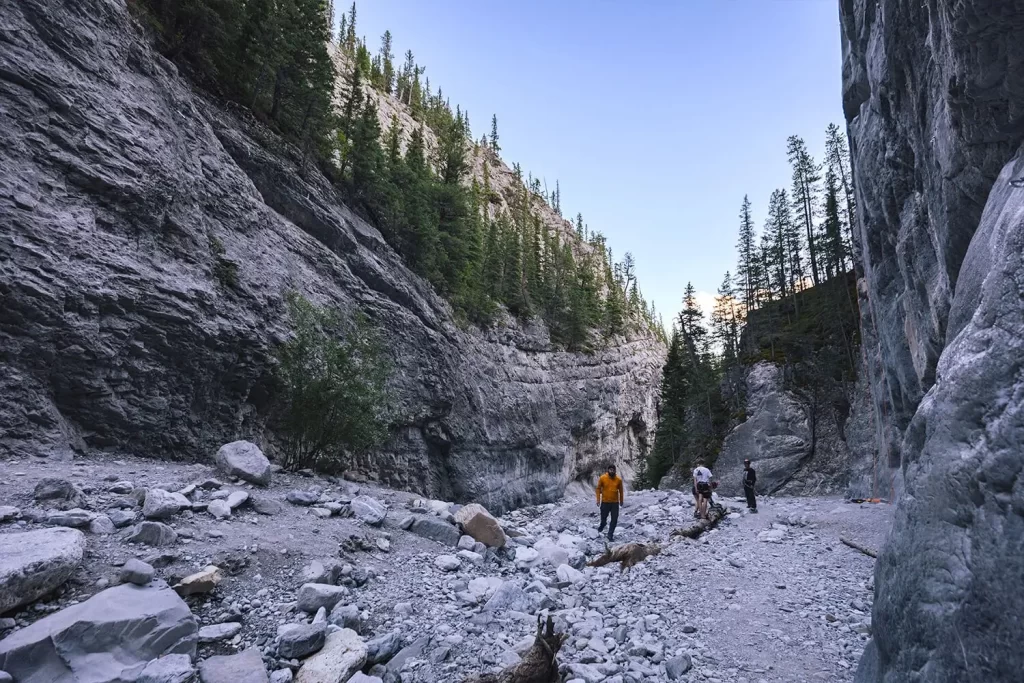
Some of the rock faces are popular among rock climbers.
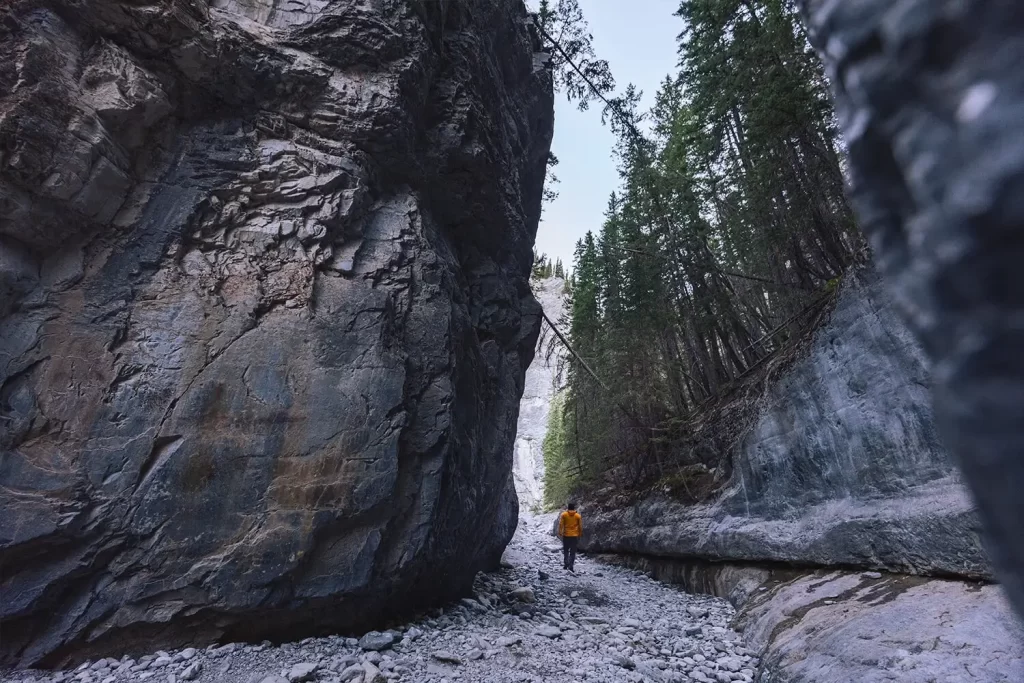
The final stretch of canyon here is also where the walls are most vertical. This tight corner is also where Native American pictographs estimated to be between 500 and 1000 years old are located. You can spot them on the wall on the left side of the photo.
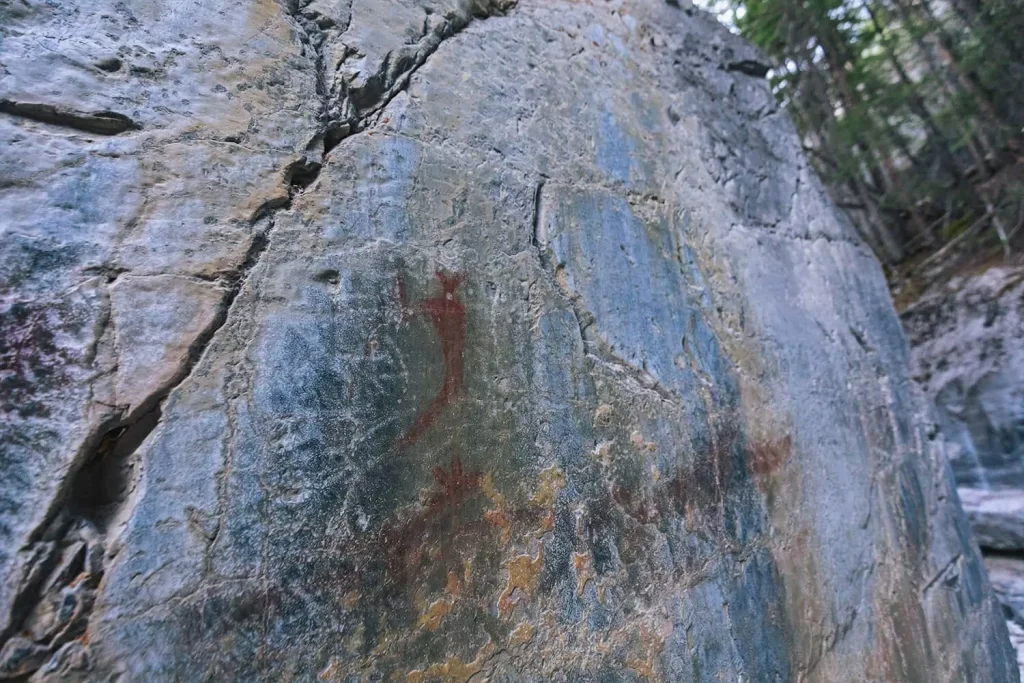
Interestingly the figures painted here are inconsistent with other art from this same region, and seem more consistent with art produced by the Hopi of Arizona. This seems to align with Hopi oral histories of the Flute Clan, who travelled north to a land of ice and snow before returning back south again. Unfortunately any such connection is unprovable, but fun to speculate.
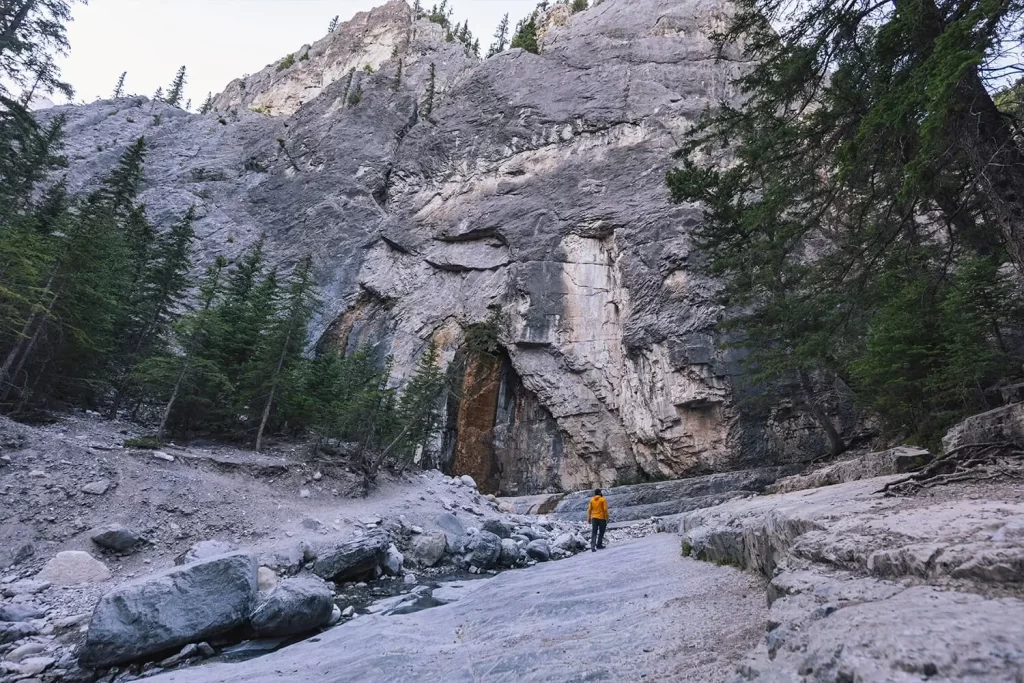
The large flat area that marks the end of the official trail.
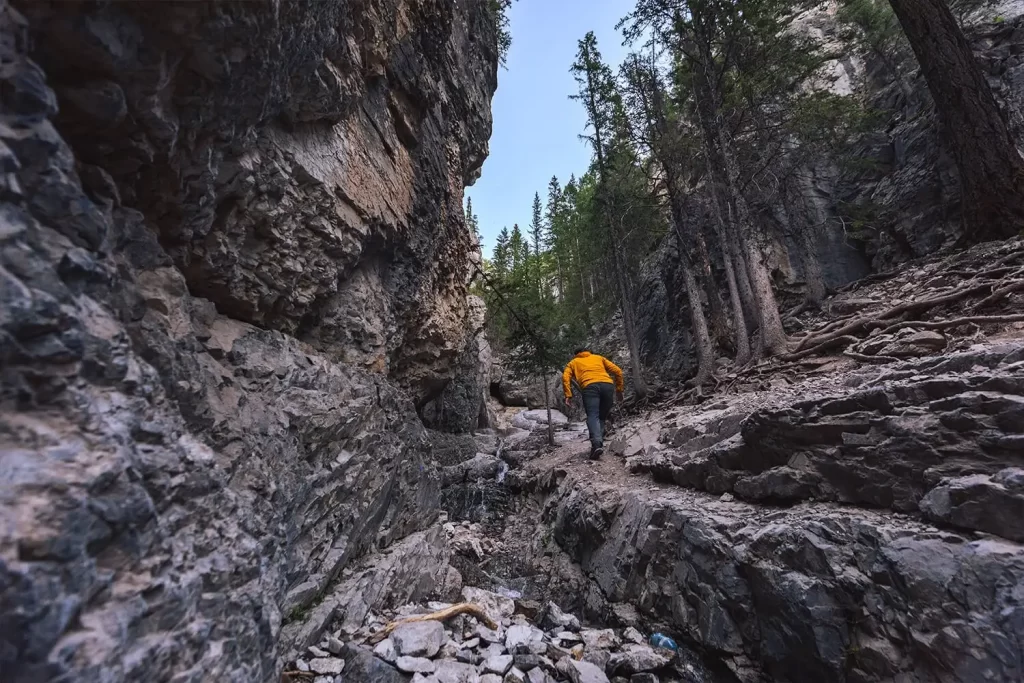
Turning up the steep slope to the right leads to a lovely waterfall however, and the source of the stream.
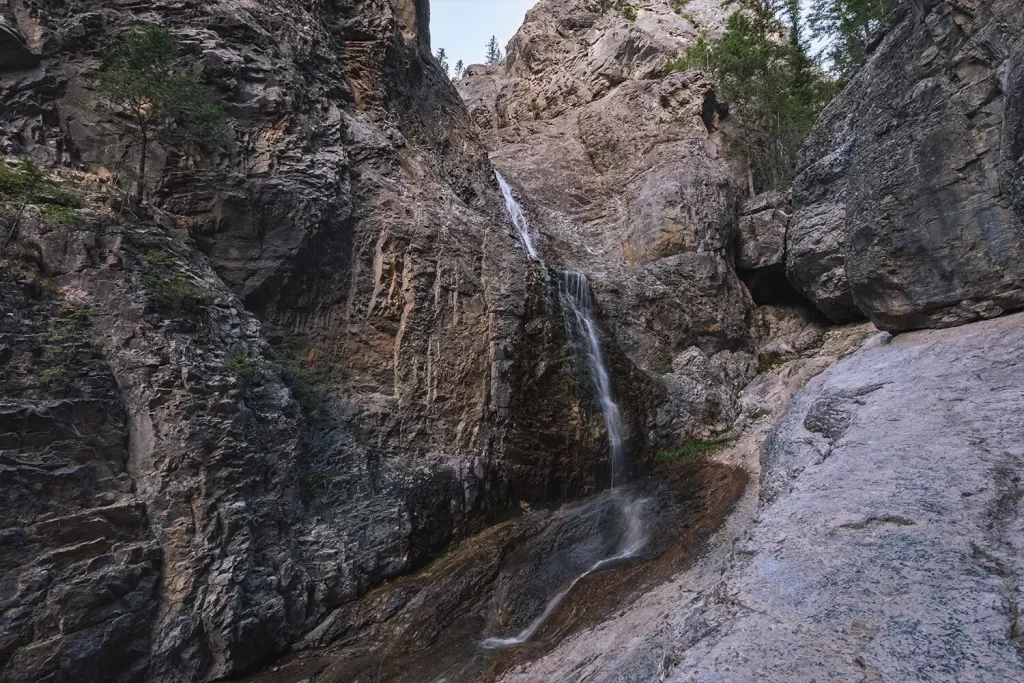
I visited Grotto Canyon in late summer when water was low. The waterfall would have been much more dramatic in spring, but it was nonetheless beautiful. The scramble up to this viewpoint is steep and tricky though, and not for everyone.
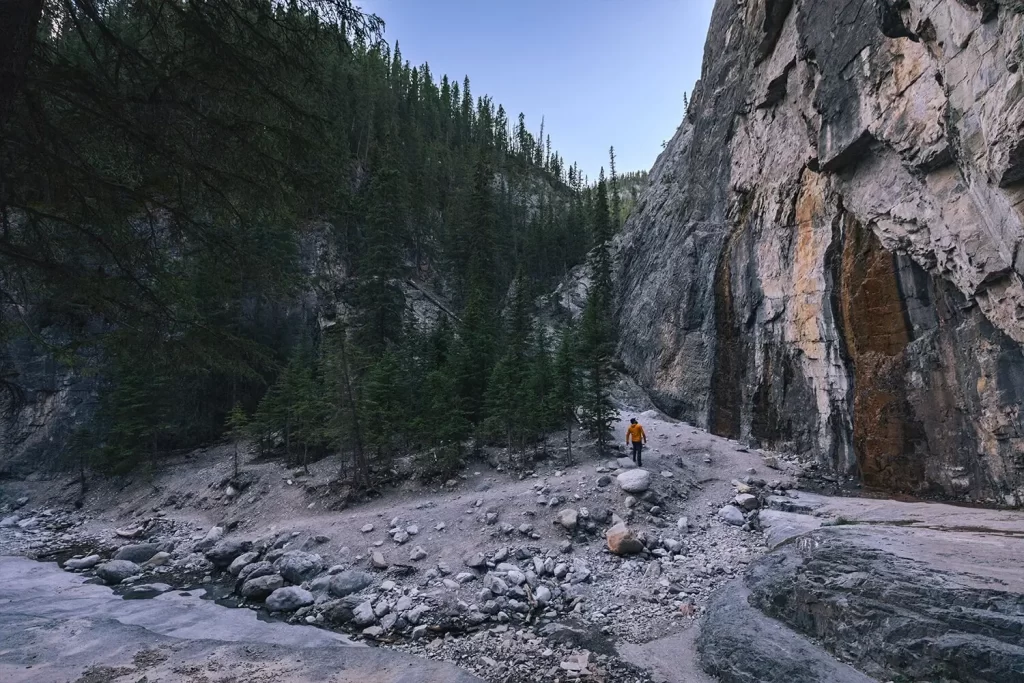
Two wet patches on the wall are barely-noticeable drips in the summer, but in the winter turn into a pair of beautiful ice pillars.
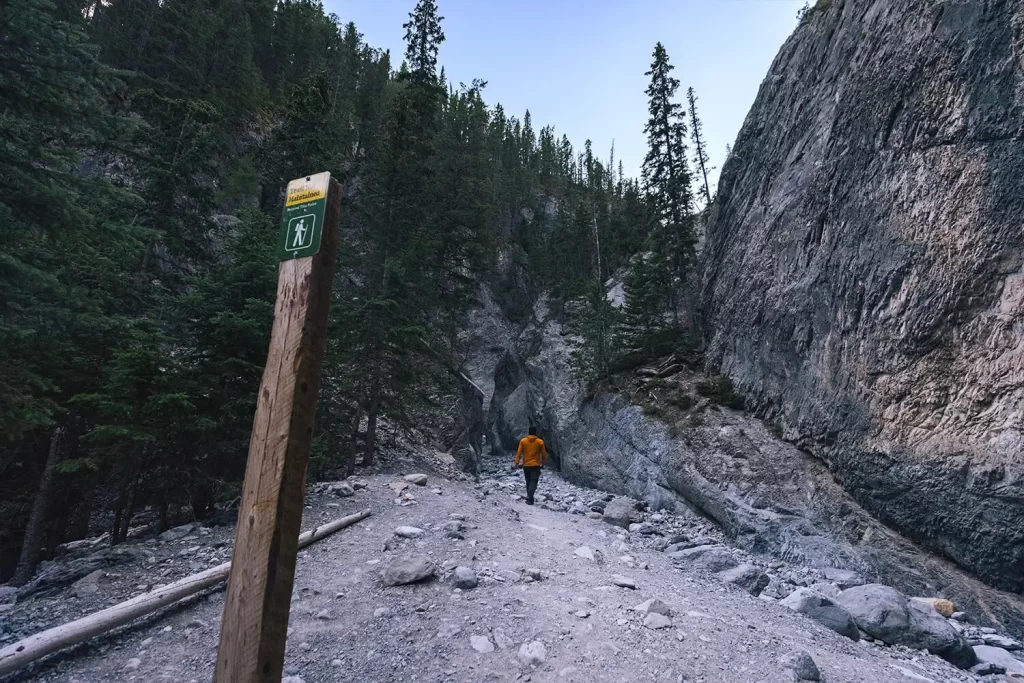
From here it’s possible to continue through more slot canyon towards the famous cave.
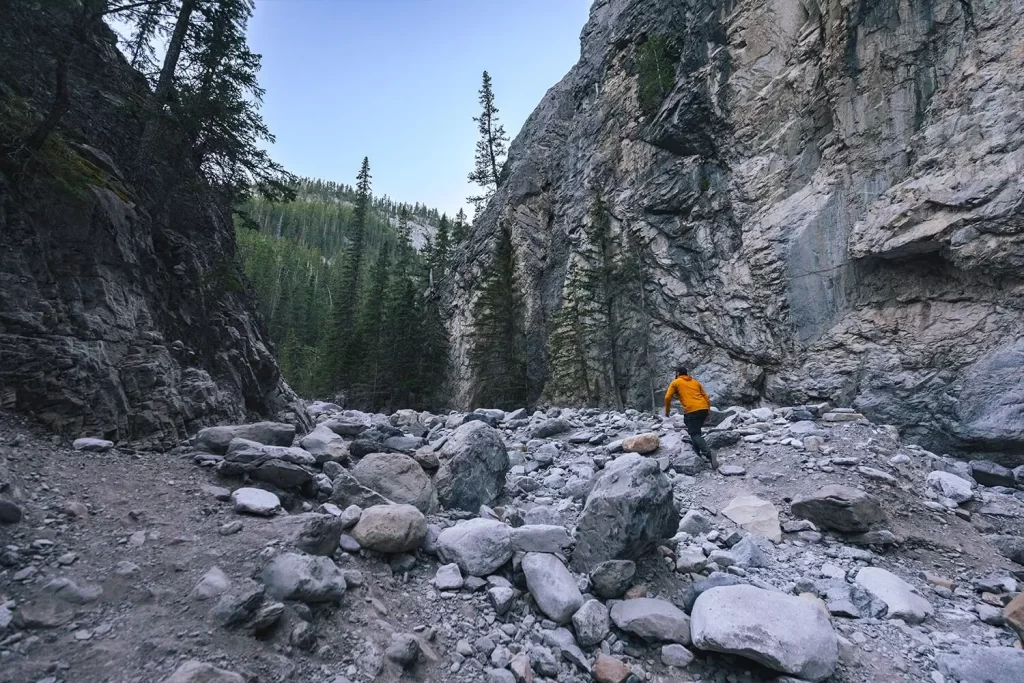
A trail winds alongside the rocky riverbed at left, but it’s also fun to hop along the rocks along the way. Either will take you where you need to go.
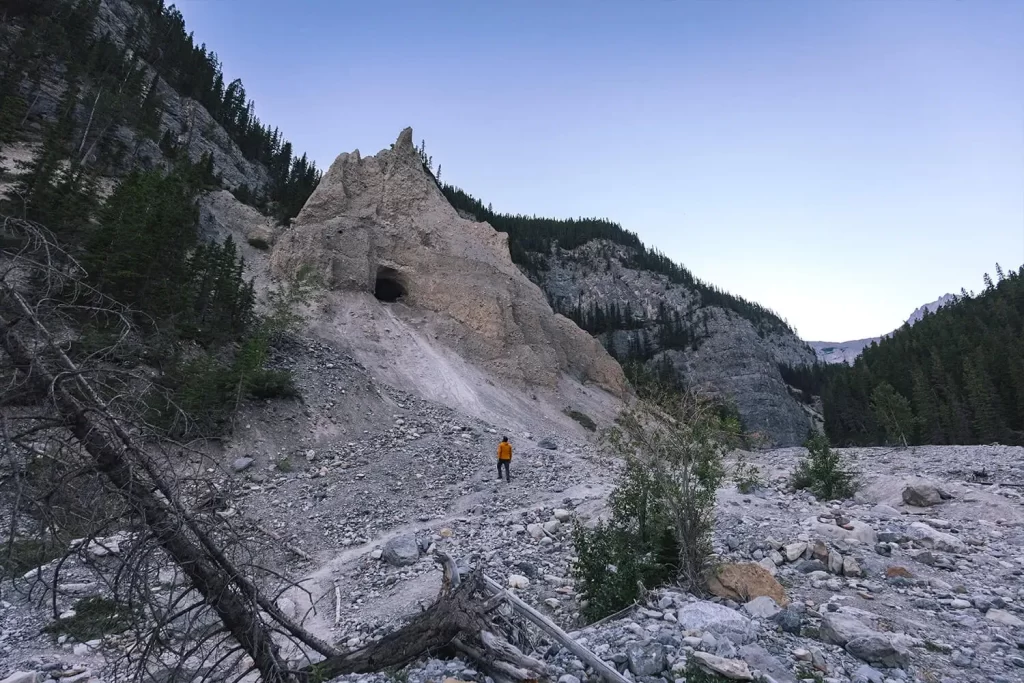
The cave is obvious from the trail or the riverbed. While it is possible to scramble up the loose and steep slope, I decided to save it for another time.
Recommended Hiking Gear
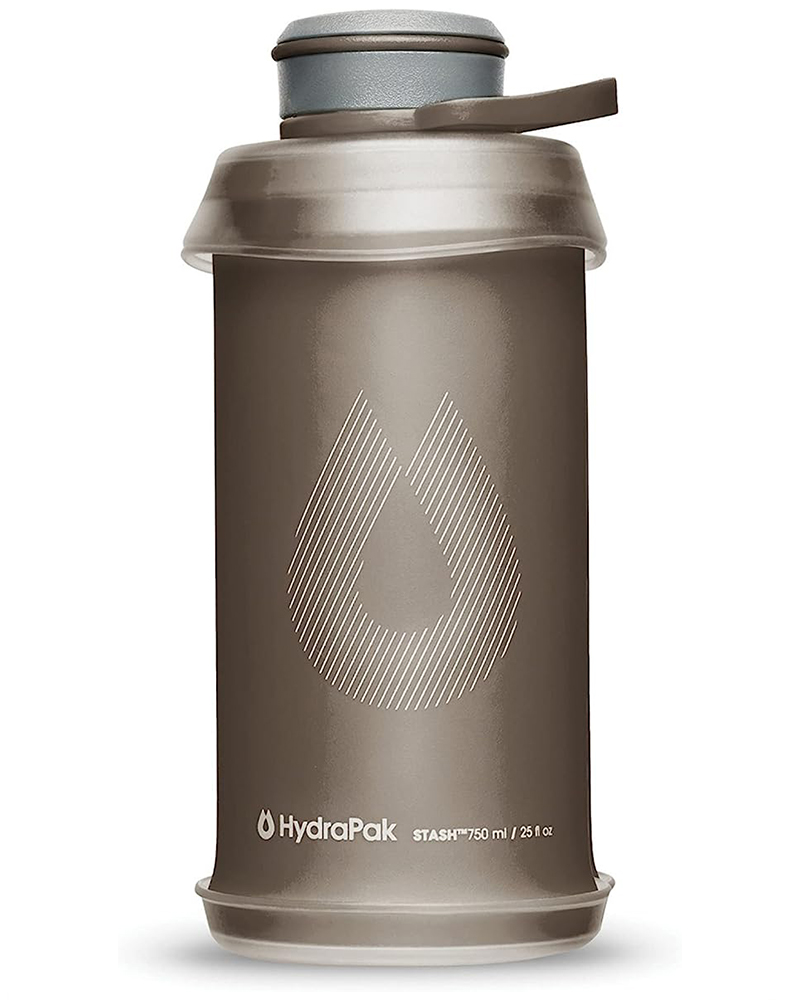
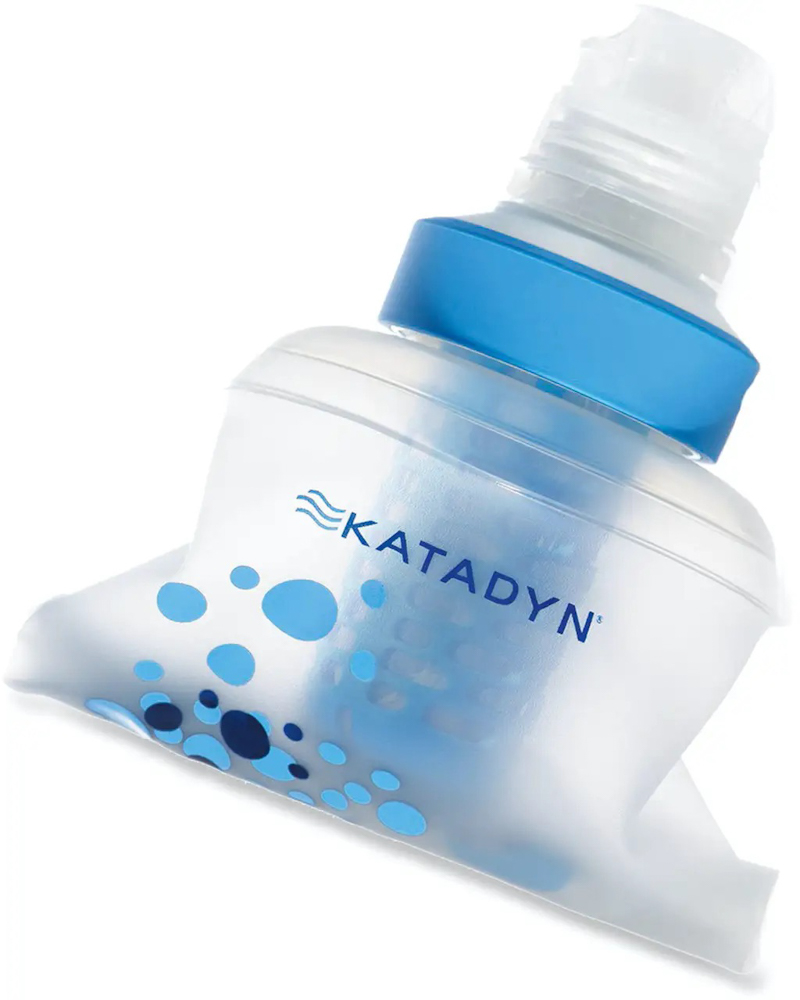
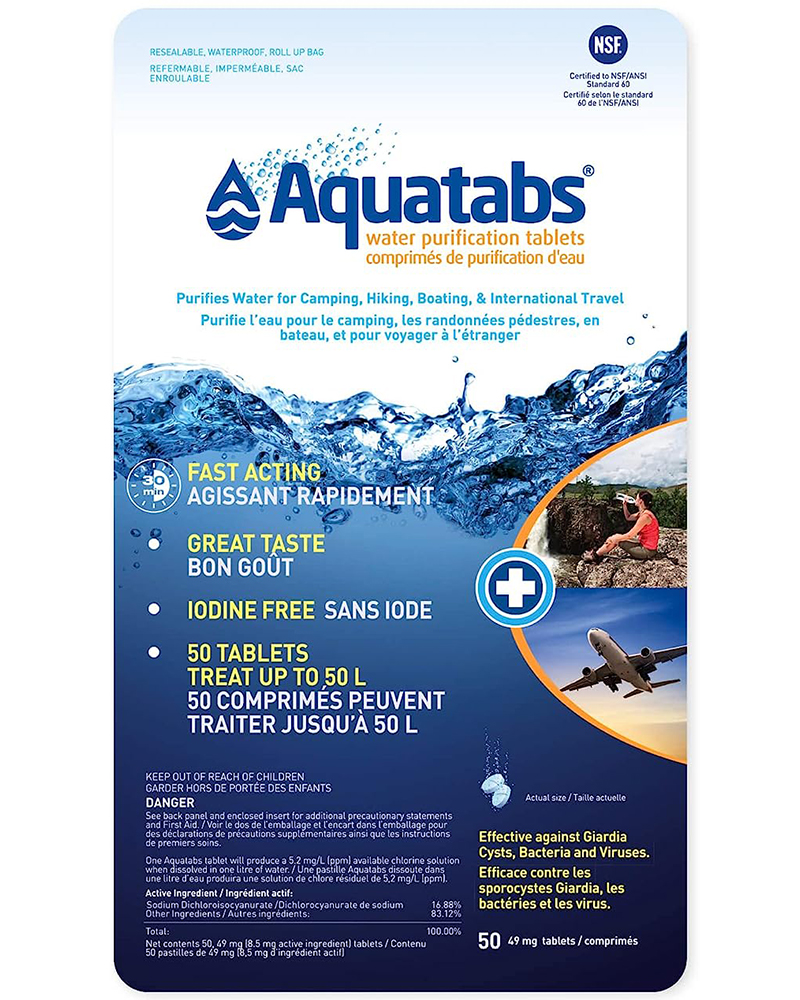
Water is a must whenever I’m hiking, especially if the sun is going to be out. My favourite water filter I’ve used is the Katadyn BeFree 0.6L, which unlike other water filters I’ve used packs up really small and lightweight. For hikes where I know there won’t be any readily available water sources along the way, I make sure to bring my own. The Hydrapak Stow 1L bottle is my go-to, for the same reason that it’s made of a soft plastic that folds up and doesn’t take up any more extra space than necessary in my pack. Finally, Aquatabs are another great option for purifying water, with one tablet being suitable for one litre of water. I previously used the Grayl water filter while travelling internationally, and though I found its hard body more convenient for day to day use and easier to drink from, it has a little too much bulk for my fast-and-light style of hiking.
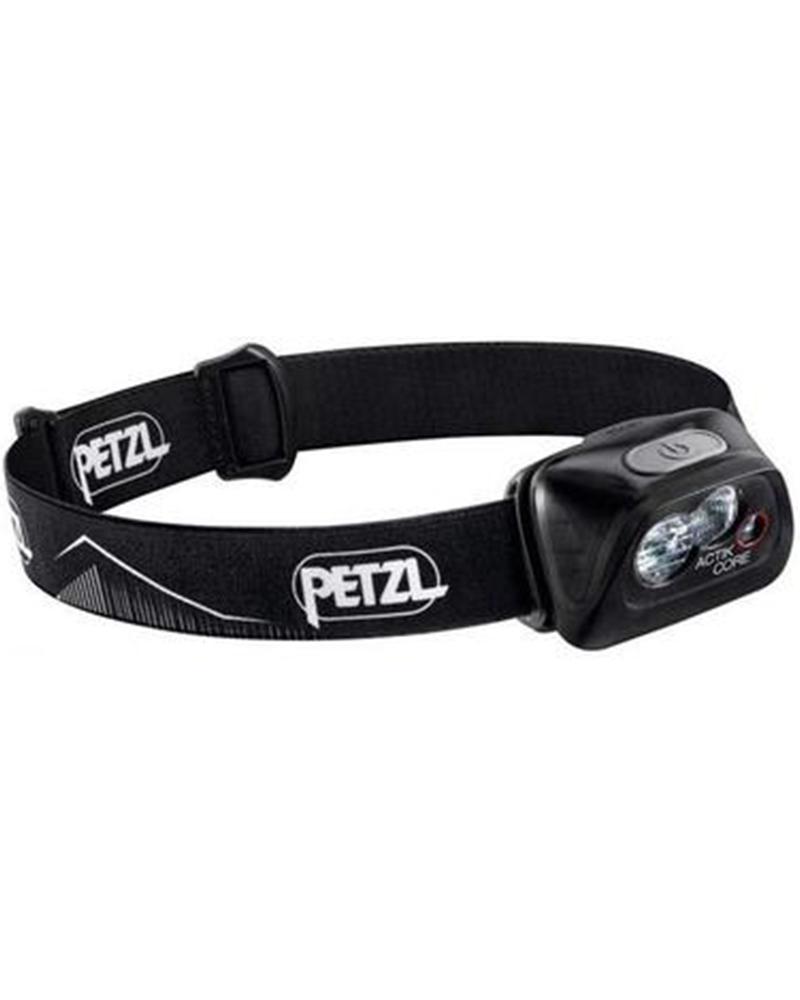
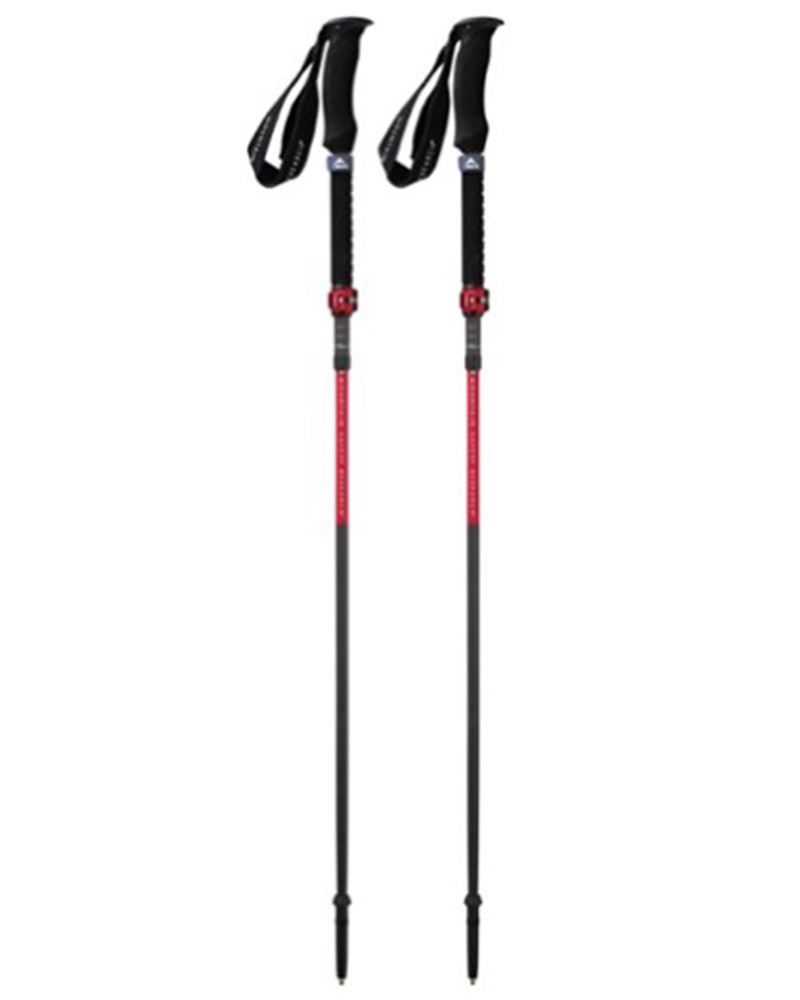
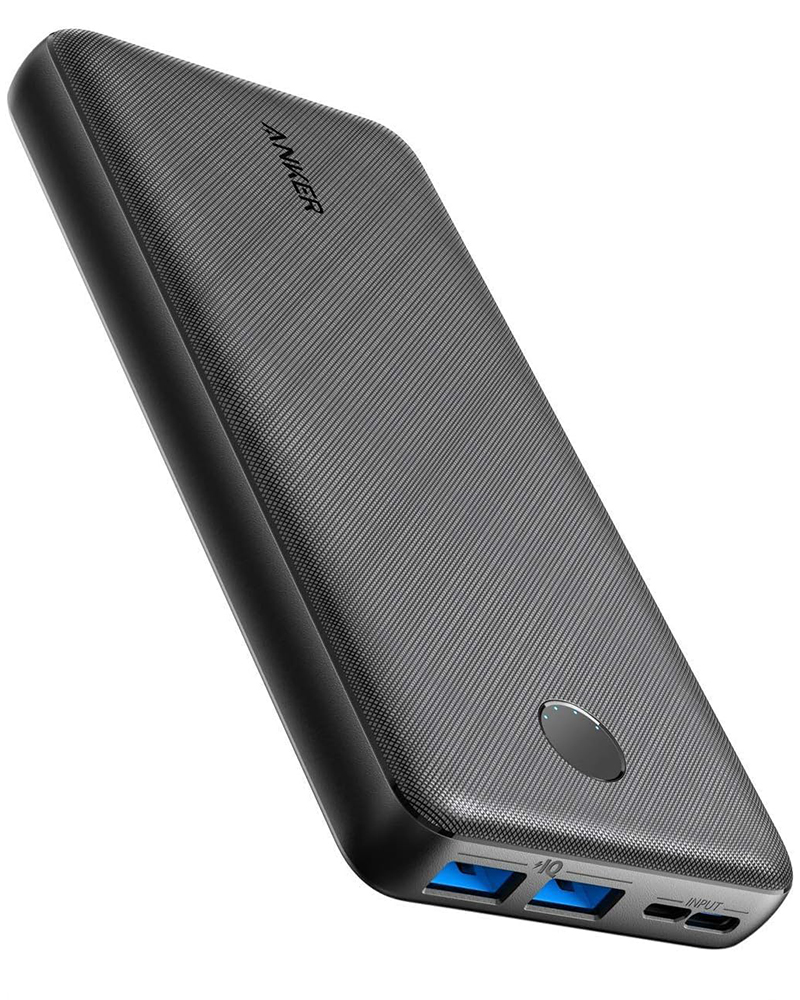
The secret to all my photos of gorgeous sunset and sunrise mountaintop views? A lot of hiking in the dark. And let me speak from personal experience when I say that the last thing that you want to happen when hiking is to be caught in the dark without a headlamp. I used the Black Diamond Spot 400 for years and it worked great – until I lost it on top of a mountain somewhere. The only downside to it was having to worry about the batteries dying, though there’s also a slightly more expensive version that has a rechargeable battery. Nowadays I’m using the Petzl Actik Core, which is a bit pricier than the more budget-friendly Black Diamond, but is also brighter, more comfortable (in my opinion), and has a hybrid power system that is rechargeable but can also take AAA batteries if needed.
You won’t see me using trekking poles on shorter hikes often – but on long hikes and backpacking trips, as well as certain scrambles, they are an absolute lifesaver. I’ve invested in a high quality ultra-lightweight pair of MSR DynaLock Ascent carbon poles which, while pricey, I don’t regret one bit. If you’re not entirely sure how much use you’re going to get out of a pair of trekking poles, the best budget-friendly option would be the Trekology Trek Z 2.0. Amazon does sell a lot of cheaper Made in China-style trekking poles for cheaper, but these usually are much much heavier and not worth buying.
All the best and most long-lasting cables and power banks I’ve ever owned have been Anker. I once had a phone cable from them that lasted me over three years of daily use! That’s why I keep an Anker PowerCore Essential 20K power bank on me. Like many people I use my phone for a lot of stuff when hiking (checking in with family, using online maps, taking photos, flying my drone) so I like to be prepared for that low battery warning by having a backup power source on me just in case.
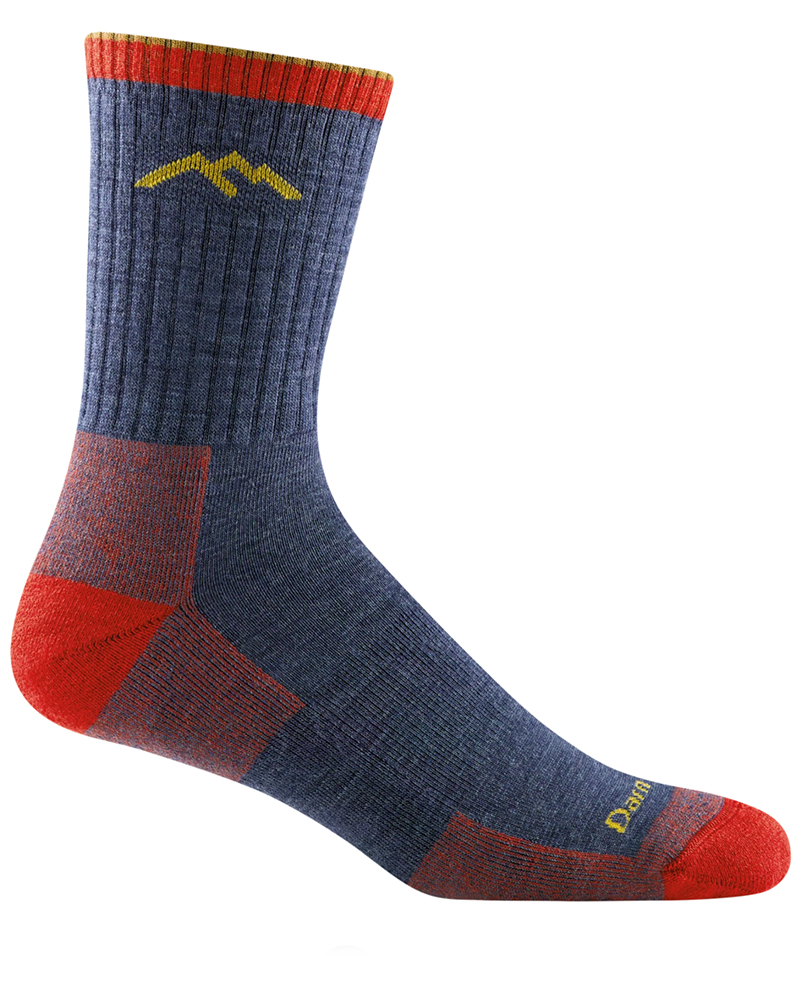
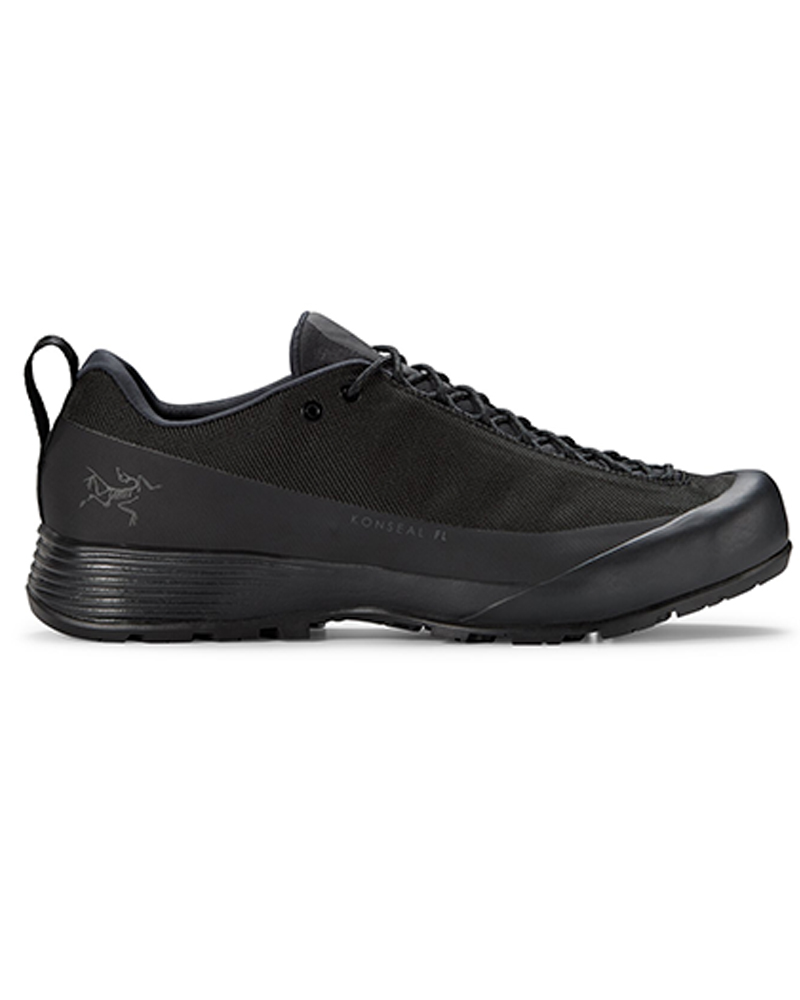
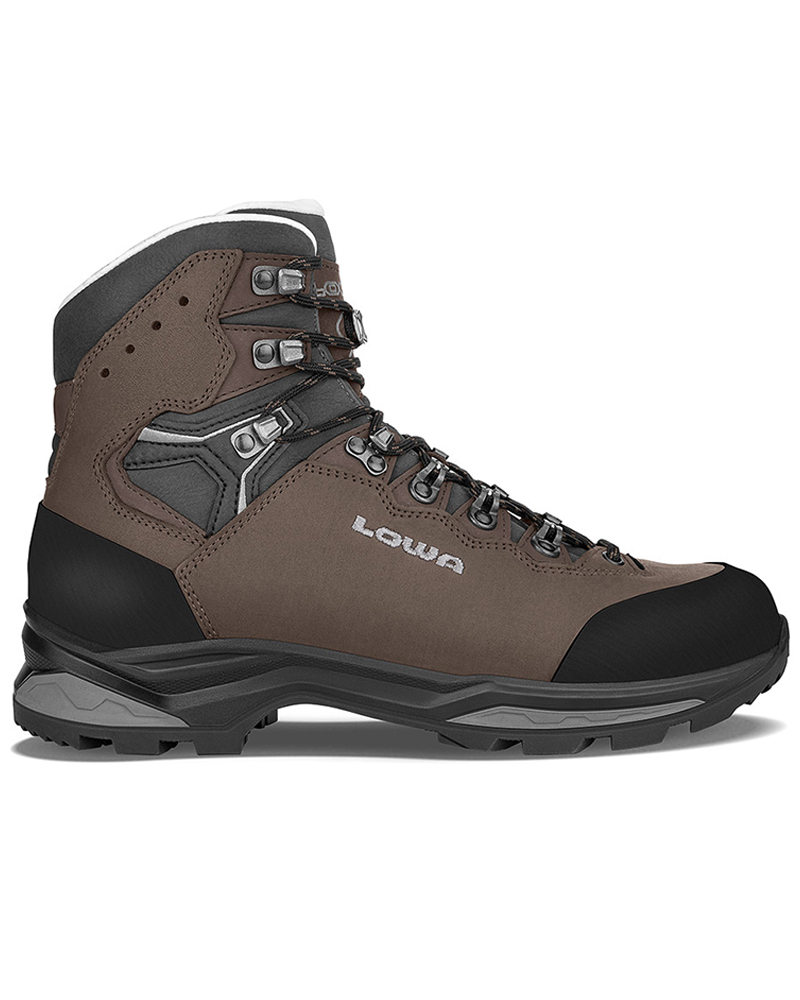
The only socks I ever buy for myself are from Darn Tough, and I almost always make sure to wear them when hiking. After years of having no problems only wearing these comfortable and rugged socks for hikes, I accidentally wore a pair of no-name socks on a hike last year and ended up with blisters on both feet. Safe to say I’m back to sticking with the Darn Tough. And the best part? They have a lifetime guarantee, meaning that if they ever wear out you can send them back for a brand new pair. For hiking footwear I go between a pair of lightweight approach shoes for quick and dirty mountain ascents or anything involving scrambling and more heavy-duty boots for longer treks. I’ve worn a couple different versions of the lightweight but super durable Arc’teryx Konseal FL 2 approach shoes for a few years now and am very impressed with the durability. I also really like the thick toecap that keeps me protected every time I stumble into a root or large rock. For longer, tougher, or muddier treks I rely on my LOWA Camino EVO GTX, which I find insanely comfortable and made of very high quality.
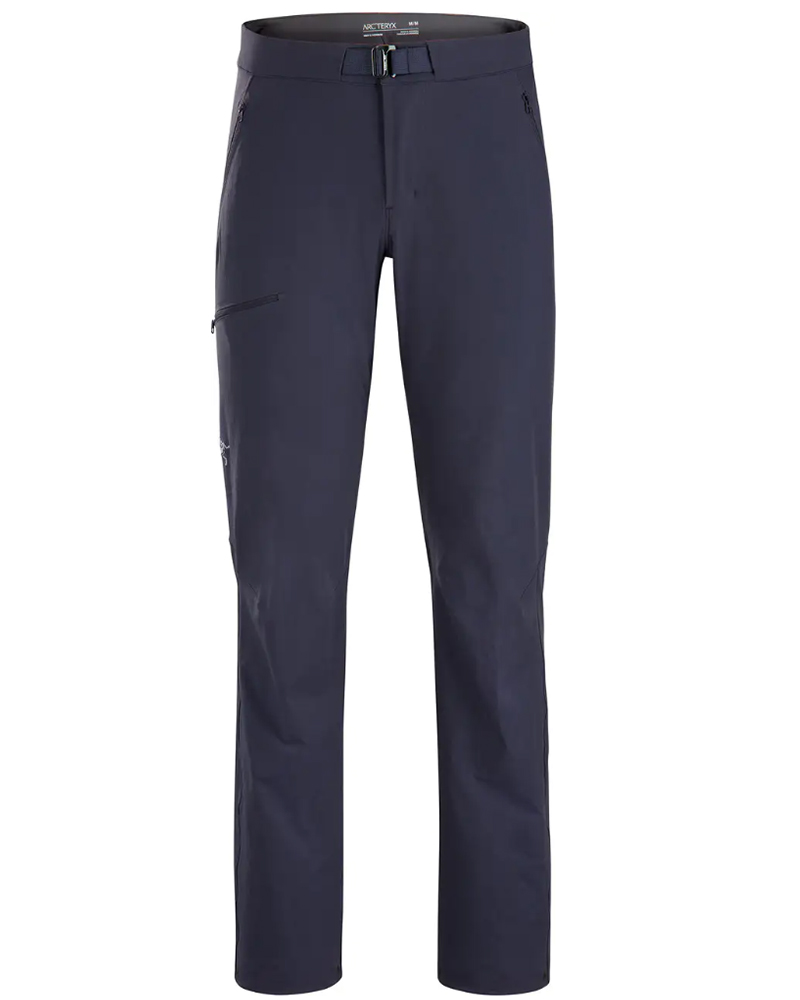

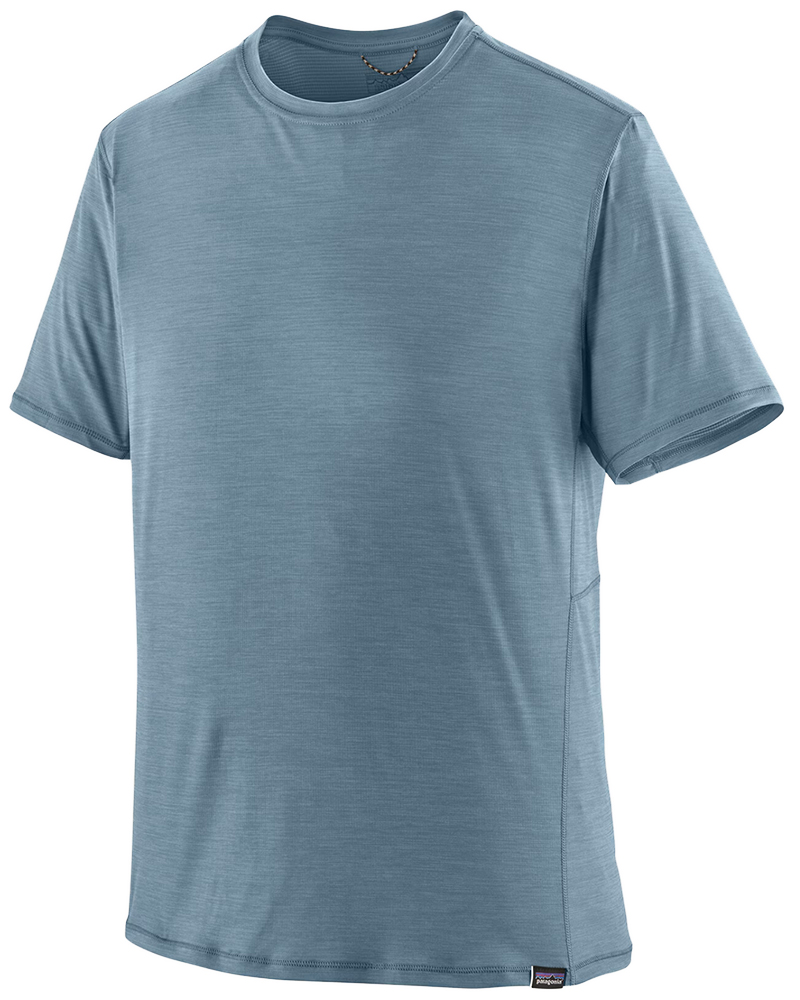
I wear my Ar’teryx Gamma Lightweight Pants on every single hike I go on, and on many days when I’m not hiking. After several years of abuse they are still holding together extraordinarily well, with only a few small holes from where I’ve fallen down and some slight stains from being repeatedly coated with mud. They’re lightweight, breathable, and super comfortable. For lightweight and breathable hiking tops I’m a big fan of both the Patagonia Capilene Shirt and the MEC Core Shirt. My Arc’teryx Squamish Hoody shows up in a lot of my photos. It’s super lightweight and packable, and does a great job of cutting the wind while also being pretty breathable. I also have an Arc’teryx Atom Hoody and Arc’teryx Beta LT that I pull out for cooler or wetter conditions.
I hope you enjoyed this guide to hiking Grotto Canyon near Canmore! Feel free to leave any questions in the comment section below or to contact me directly via social media.

Thanks for providing detailed information about Grotto Canyon. I have been to Gap Lake more than once. I believe Grotto Canyon is not far away from Gap Lake (if it’s located the east of Canmore).
All pictures are beautiful and reveals the natural beauty of Grotto Canyon. Must to visit place.
Thanks again,
Mathews Dita